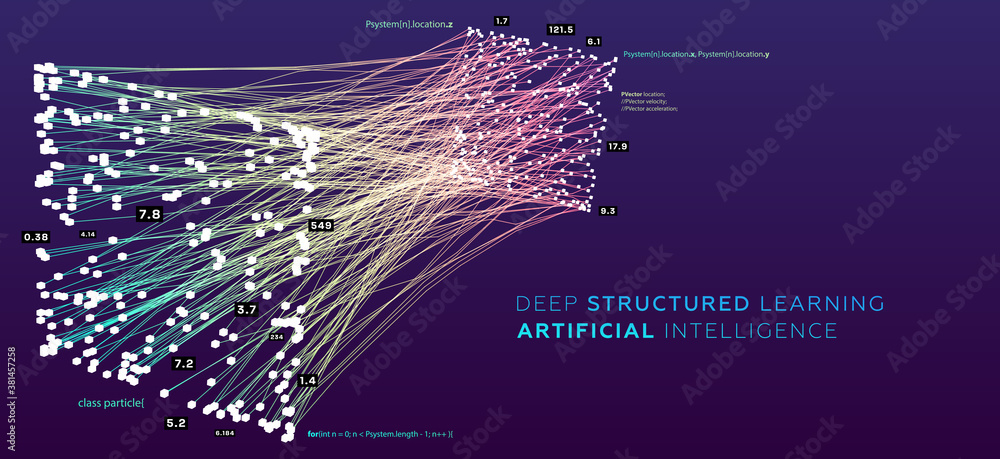
This is part four of nine of the ontology series. We explore how common vocabularies and ontologies revolutionize data systems and AI applications by providing essential meaning and context. These frameworks enable seamless data integration and enhance interoperability.
Common vocabularies are standardized sets of terms, definitions, and relationships that provide a shared language for specific domains or industries. They serve as the building blocks for ontologies and enable consistent communication across different systems and organizations.
Key Characteristics:
The journey from isolated data silos to integrated systems has been driven by the need for common vocabularies:
Phase 1: Isolated Systems
Phase 2: Basic Standards
Phase 3: Semantic Integration
Standardized vocabularies enhance data accuracy and consistency:
Elimination of Ambiguity: Clear, precise definitions reduce confusion Consistent Naming: Standard terms across all systems and processes Data Validation: Automated checking against defined standards Error Reduction: Fewer mistakes in data entry and interpretation
Seamless integration between different systems and organizations:
System Integration: Easier connection of diverse platforms and applications Data Exchange: Smooth transfer of information between partners API Development: Standardized interfaces for system communication Cloud Integration: Consistent data formats across cloud platforms
Streamlined processes and improved productivity:
Reduced Training Time: Standard terminology accelerates learning Faster Decision Making: Clear information enables quick responses Improved Collaboration: Shared language enhances team communication Process Standardization: Consistent procedures across locations
Creating effective common vocabularies requires systematic approach:
Domain Analysis: Understanding the specific subject area and requirements Stakeholder Engagement: Involving key personnel in vocabulary design Term Identification: Identifying all relevant concepts and terms Definition Creation: Writing clear, precise definitions for each term Relationship Mapping: Defining how terms relate to each other Validation and Testing: Ensuring vocabulary meets user needs
Industry-standard approaches for vocabulary implementation:
RDF (Resource Description Framework): Standard model for data interchange OWL (Web Ontology Language): Language for defining ontologies SKOS (Simple Knowledge Organization System): Framework for knowledge organization JSON-LD: JSON format for linked data
Connecting vocabularies with existing systems:
API Development: Creating interfaces for vocabulary access Database Integration: Embedding vocabulary standards in data models Middleware Solutions: Using integration platforms for system connection Custom Connectors: Building specific integration points for unique requirements
Medical terminology standardization:
ICD Codes: International Classification of Diseases SNOMED CT: Systematized Nomenclature of Medicine LOINC: Logical Observation Identifiers Names and Codes RxNorm: Standardized drug names and identifiers
Financial data standardization:
FIBO: Financial Industry Business Ontology ISO 20022: International standard for financial messaging XBRL: eXtensible Business Reporting Language FIX Protocol: Financial Information eXchange
Industrial terminology standards:
ISO 8000: Data quality standards STEP: Standard for Exchange of Product Data PLM Standards: Product Lifecycle Management Industry 4.0: Smart manufacturing terminology
Public sector standardization:
NIEM: National Information Exchange Model DoD Standards: Department of Defense terminology Federal Data Standards: Government-wide data definitions International Standards: Cross-border cooperation frameworks
Successful implementation requires strong leadership support:
Executive Sponsorship: Senior management backing for vocabulary initiatives Resource Allocation: Adequate funding and personnel for development Change Management: Systematic approach to organizational adoption Performance Measurement: Tracking progress and measuring success
Involving stakeholders throughout the process:
User Research: Understanding how people actually use terminology Feedback Loops: Continuous improvement based on user input Training Programs: Educating users on new vocabulary standards Support Systems: Providing help and guidance during transition
Robust technical foundation for vocabulary systems:
Scalable Architecture: Systems that can grow with organizational needs Performance Optimization: Fast response times for vocabulary queries Security Measures: Protecting sensitive vocabulary information Backup and Recovery: Ensuring vocabulary availability and integrity
Overcoming organizational inertia:
Challenge: People prefer familiar terminology and processes Solution: Comprehensive change management and training programs Best Practice: Start with high-impact, low-resistance areas
Managing sophisticated vocabulary systems:
Challenge: Complex ontologies can be difficult to implement and maintain Solution: Phased implementation with incremental complexity Best Practice: Begin with simple vocabularies and add complexity over time
Keeping vocabularies current and relevant:
Challenge: Vocabularies require ongoing updates and maintenance Solution: Automated tools and processes for vocabulary management Best Practice: Establish clear governance and maintenance procedures
AI will enhance vocabulary capabilities:
Machine Learning: Automated vocabulary expansion and refinement Natural Language Processing: Better understanding of human language Automated Reasoning: Intelligent inference from vocabulary relationships Cognitive Computing: Systems that learn and adapt vocabulary usage
Next-generation web technologies:
Linked Data: Connecting vocabulary across the web Semantic Search: Meaning-based information retrieval Knowledge Graphs: Comprehensive knowledge representation Intelligent Agents: Automated vocabulary-based decision making
This article demonstrates how common vocabularies and ontologies provide the foundation for effective data integration and interoperability, enabling organizations to unlock the full potential of their data assets.
In Part 5, we will explore advanced ontology development techniques and best practices.

The defense sector is evolving rapidly with the integration of data science. With advancements in data technologies, data science has become crucial in shaping military strategy and operational decisions. Modern military strategy heavily relies on data-driven insights, predictive models, and real-time analysis to gain an advantage over adversaries.

In the rapidly evolving landscape of artificial intelligence and data management, understanding the distinctions between knowledge models, ontologies, and knowledge graphs is crucial for organizations looking to implement effective knowledge management systems. This first installment of our series provides a foundational understanding of these concepts and their relationships.